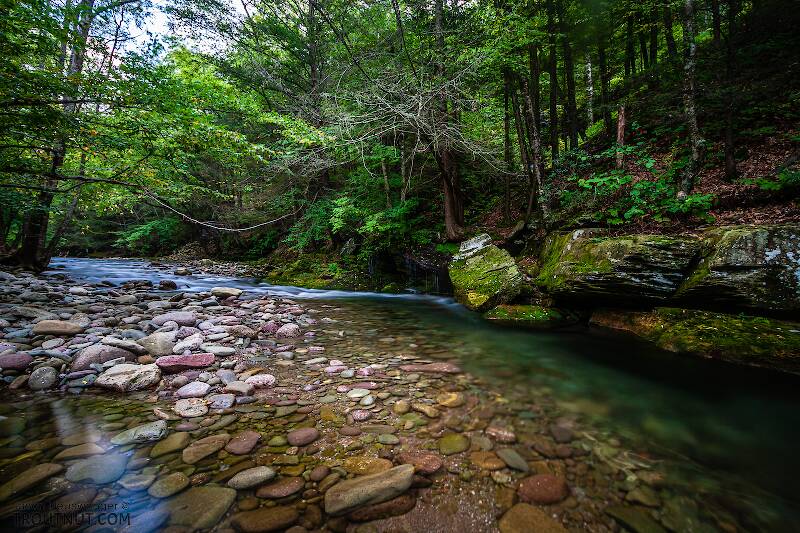
Hex Mayflies
Hexagenia limbata
The famous nocturnal Hex hatch of the Midwest (and a few other lucky locations) stirs to the surface mythically large brown trout that only touch streamers for the rest of the year.

Stonefly Species Arsapnia decepta (Little Snowflies)
Species Range
Physical description
Most physical descriptions on Troutnut are direct or slightly edited quotes from the original scientific sources describing or updating the species, although there may be errors in copying them to this website. Such descriptions aren't always definitive, because species often turn out to be more variable than the original describers observed. In some cases, only a single specimen was described! However, they are useful starting points.
Description from GBIFthe Global Biodiversity Information Facility
Source: Variation In The Epiproct Of Arsapnia Decepta Banks, 1897 (Plecoptera: Capniidae), With Comments On Arsapnia Coyote (Nelson & Baumann 1987)
Male epiproct (n = 2). Length not estimated due to specimen condition and orientation (Figs. 61, 64; Table 5). Width 238 µm. Shape and general features similar to other specimens examined. Setal spines in clusters of 13 - 18 (Table 5, Figs. 61 - 66). Neck width 93 µm (Fig. 64).
Tergal process (n = 3). Tergum 7 bears a broad, sometimes mesally notched, dorsal process 185 µm in width (Figs. 13, 19, 22, 27); dorsal margin concave; and tergum 6 bears a smaller mesal process. Dorsolateral margins bearing a few knob-like scales. Width across anterior margin 172 - 229 µm. ; lateral margins converging only slightly from anterior aspect; process bears lateral patches of small scale-like structures. Width of process across anterior margin 172 - 231 µm; width greater than median height. Bearing a slight notch on the posteromedian margin (Fig. 49 - 52, 57 - 58), and with lateral margins moderately convergent. Dorsolateral lobes on either side of notch covered with conical tubercles. Width of process across anterior margin 100 - 192 µm.
Start a Discussion of Arsapnia decepta
Stonefly Species Arsapnia decepta (Little Snowflies)
Species Range
Common Names
Resources
- NatureServe
- Integrated Taxonomic Information System
- Global Biodiversity Information Facility
- Described by Banks, N. (1897) New North American Neuropteroid Insects. Transactions of the American Entomological Society 24, 21–31.


